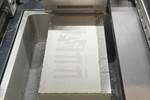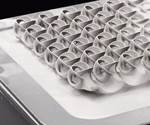Digital Metal Launches Superalloys for Extreme Applications
Digital Metal has launched two superalloy grades for use in extreme environments – DM 247 and DM 625.
Digital Metal has launched two superalloy grades for use in extreme environments – DM 247 and DM 625. Both have undergone extensive in-house testing, says the company. Exhibiting strength and corrosion resistance even when subjected to high heat and stress, these superalloys are said to be suitable for use in challenging applications such as aerospace, automotive and chemical.
The DM 247 is based on the non-weldable MAR M247, which is widely used as material for turbine blades and in other applications with elevated temperatures. The DM 625 is an Inconel 625-grade. Its application areas range from seawater applications and chemical processing equipment, to nuclear industry and aerospace.
So far it has been difficult to use non-weldable materials such as MAR M247 in 3D printing, where high solidification rates and thermal gradients are inherent, says the company. Digital Metal’s binder jetting technology is said to help avoid most of these problems by printing in an ambient temperature without applying any heat, followed by a separate sintering step. During sintering densification takes place without melting and with minimal thermal gradients during cooling from sintering temperature.
“Many producers within the aerospace and automotive business have long been anticipating high-quality superalloys that are suitable for 3D printing,” says Ralf Carlström, general manager at Digital Metal. “Now we can offer them the perfect combination – our binder jetting technology and superalloys that are specially developed for our printers.”
Related Content
-
This Year I Have Seen a Lot of AM for the Military — What Is Going On?
Audience members have similar questions. What is the Department of Defense’s interest in making hardware via 3D printing over conventional methods? Here are three manufacturing concerns that are particular to the military.
-
VulcanForms Is Forging a New Model for Large-Scale Production (and It's More Than 3D Printing)
The MIT spinout leverages proprietary high-power laser powder bed fusion alongside machining in the context of digitized, cost-effective and “maniacally focused” production.
-
3D Printed Cutting Tool for Large Transmission Part: The Cool Parts Show Bonus
A boring tool that was once 30 kg challenged the performance of the machining center using it. The replacement tool is 11.5 kg, and more efficient as well, thanks to generative design.










